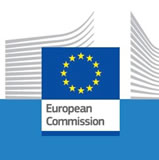
European Conference on Road Safety Data and
Knowledge-based Policy-making
Athens 22/23 November 2012
Local organisers National Technical University of Athens
Follow @DaCoTAProject
The European Union Council of Ministers of Transport agreed that road fatalities needed to be reduced by 50% by 2020 and the DaCoTA Project was an important step in developing the evidence-based information necessary to support road-safety policies that could lead to casualty reduction. Although previous road safety strategies have been highly successful the future target in the EU, coupled with greater demands to reduce serious injuries, is likely to be more challenging. It is, therefore, more important than ever that casualty reduction strategies are based on the best possible data and knowledge. The European Road Safety Observatory, following the developments of the DaCoTA Team, will be making an important contribution.
At a well attended event, the DaCoTA Conference contributed to the dissemination of this leading-edge knowledge and to reaffirming the case for continued European efforts in this area. Presentations from the range of sessions, below, are now available in the Conference Proceedings to assist and benefit road safety practitioners and interested groups and individuals world-wide.
-
Future Road Safety Challenges in Europe

- The Road Safety Management Processes in Europe
- Consolidated Road Safety Data and Knowledge for Policy-Making
- Country Developments and Performance Comparisons
- Measuring Driver’s Behaviour
- Improving Our Understanding of Crashes
- Measuring, Assessing and Improving Vehicle Safety
- Future Knowledge-based Decision Making for Europe
Project co-financed by the
European Commission Directorate General for Mobility and Transport
Conference Conclusions
These are the main conference conclusions from the final discussion session concerning the future of the Observatory. Comments are from panellists (Rune Elvik, Richard Allsop, Manuelle Salathé) and delegates.
- The work of DaCoTA was very well received, there was a lot of interest in the project results including both the main outputs as well as the research aspects of the project.
- The European Road Safety Observatory was strongly appreciated as the central place to find safety data and information on safety issues. The link to policy-making should be strengthened at EU and national levels.
- There was a strong support to the proposal that ERSO should become a routine activity with the data and outputs regularly updated. It should have a clearer, stronger identity within the Commission website.
- A close working relationship with Member States was valued but data validation procedures could be improved.
- The group identified that In-depth data was needed by all types of stakeholder but particularly the automotive and roads industries. A focus on injuries and long-term will support a Serious Injury reduction strategy.
- New technologies used in naturalistic driving studies present a great opportunity for more accurate and more detailed information about driver behaviour.
- New vehicle technologies for crash avoidance have the potential to reduce crashes considerably but it is essential to identify the best performing systems once they are in use. Better understanding of driver behaviour will improve the effectiveness of these safety systems.
- Increasing numbers of countries have a trauma register and are able to link this with Accident data, this is expected to provide a rich resource to improve the understanding of crashes and support the Serious Injury Strategy but the limitations of national differences should be identified.
- ERSO has been developed with an international or national focus however the relationship to national observatories and the application to regional areas has yet to be considered.
- The DaCoTA work on Road Safety Management was innovative and useful and has improved the understanding of this important issue but further work is needed to identify best practise.
- The Safe System Approach provides a strong basis for road safety management as exemplified by the newly published ISO39001.
- Future research needs for road safety management include the need to improve the understanding of intersectoral activity.
- All new road safety research projects should have a requirement that they produce output in a suitable form to be incorporated within ERSO
- There should be improved co-operation between ERSO and other national and regional observatories.
Local Conference Organisers: National Technical University of Athens



